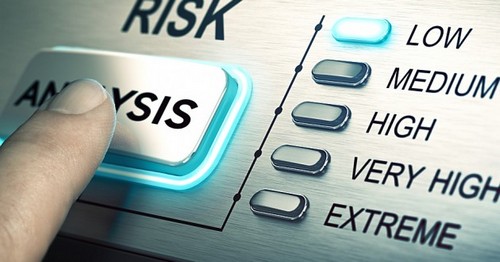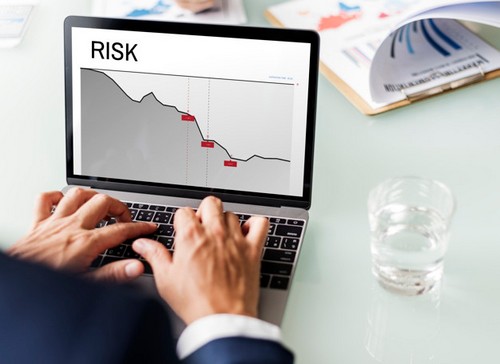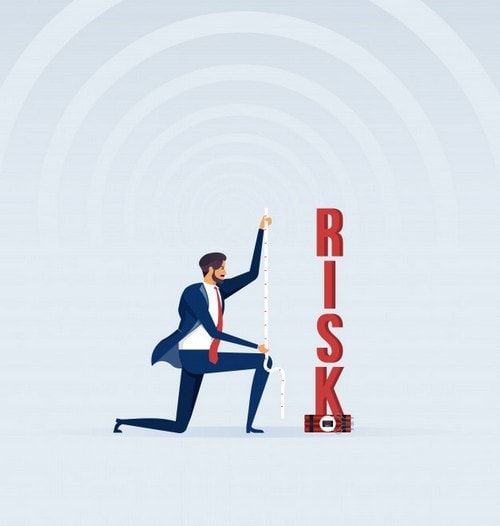The term risk analysis is used to refer to the process in which the potential risks or issues are identified and analyzed which have a possibility of impacting the key business activities or critical projects so that the entities like organization and businesses can mitigate or avoid those risks to the maximum extent.
Table of Contents
Overview

Risk analysis is basically a component of risk management. This is carried out so that the organization or the business entities could avoid any kind of unforeseen events which are basically termed as risks. It majorly consists of the identification and the analysis of the potential risks.
It helps in mitigating or avoiding the risks that may harm the entities. It is basically the review of all of those kinds of risks that may be associated with a particular event or any incident.
Now it can be applied to several things like the projects or the security-related issues or the information technology etc. any situation where the risk can be analyzed in terms of either qualitative or quantitative basis, risks analysis is performed there.
In general, the process risk analysis of the assessment of the likelihood of the events that may occur adversely within any formal entity be it a government organization, corporate sector, or even the environment sector.
So basically it is nothing but the study of the underlying uncertainty of a particular course of the event. It is used to refer to the uncertainty that is present in the ash flow streams that are forecasted or in the probability of the success of the project or the variance in the portfolio or the returns on stocks etc.
Due to this particular reason often it has been seen that the risk analysts would like to work with the forecasting professionals so that they could together minimize the effects of the negative unforeseen events which may have come before.
In general, it is a technique that is used for the purpose of identifying and assessing the various factors which may jeopardize the success of any particular project or the achievement of a particular goal.
It is a technique which is quite helpful when it comes to defining certain preventive measures for reducing the chances of those factors so that they don’t occur and also for the purpose of identifying the various countermeasures so that one can successfully deal with the constraints while developing so that any possibility of negative unforeseen events can be alerted immediately of the competitiveness of the company.
Another very popular method that is used for computing the risk analysis is called the Facilitated Risk Analysis Process (FRAP) in the computer field.
Thus to perform the analysis, one needs to consider the probability of the occurrence of adverse events which may be due to any natural cause like storms or earthquakes, etc or it can be also due to an in advent human activities.
Now one of the most important parts of the risk analysis is to identify the potential for the level of harm that can occur due to those events and also the likelihood of the occurrence of those events.
What are the different types of risk analysis?
Now the risks are a part of any business endeavor. This analysis should be done on the basis of its recurring manner and should be updated depending upon the arrival of any new kind of possible threats.
Often the strategy helps in minimizing the future risk probability as well as the damages that may happen. Now the risk analyses generally can be classified into two different categories.
Quantitative and Qualitative Risk Analysis
1) Quantitative risks assessment
In this type, with the help of the simulation process, a risk model is built. Also, deterministic statistics can also be used so that the numerical values are assigned to the risk.
Now the inputs are generally the random variables that are fed into the risk model. After this, the model will generate a range of output with respect to the range of corresponding input.
For instance, the ‘Monte Carlo simulation’ can be used to generate a possible set of outcomes or inputs. After this, graphs and various scenario analysis is used for the analysis of the model. On the basis of this, the decision is made. Also, there are many other risk management tools with the help of which the outcomes can be generated.
2) Qualitative overview
Now unlike the previous one, this is an analytical method of risk analysis. In this, the risks are not identified on the basis of numerical or quantitative ratings. In the qualitative analysis, a written definite of the various uncertainties are required.
After this, the evaluation of the extent to which the risk will impact is done. And in the case of occurrence of the negative events countermeasure plans are evaluated. Almost all of the business requires to do an analysis to some extent.
6 Steps in the Process of risk analysis
Now mainly there are six steps that are involved in the process. These are discussed below-
1) Conducting a survey risks assessment
This is the very first step in which the input is obtained from the management and the department heads. In this, the documentation of specific risks or threats is don within each of the departments.
2) Identification of the risks
The main reason why the risk analysis is performed is for the evaluation of the IT systems or several other aspects of the entity. For instance the various risks to the software, hardware, IT employees, data, the possible adverse events which can happen like human error, flooding, etc.
3) Analyzing the risk
After identifying the risks, the process includes the determination of the likelihood of the occurrence of each of the risks. Along with that the consequences that are linked to it and the manner in which they would affect the main goal of the project should be taken into consideration.
4) Developing a management plan
Now after the analysis has been done and it has been found that which assets are of some worth and which can be threats, it produces control recommendations for the purpose of mitigation transferring and acceptance or for the avoidance of the risk.
5) Implementation
Now the ultimate objective of the entire risk analysis is to implement the plan so that the risks could be reduced or avoided or mitigated.
6) Monitoring the risks
This is the last step of the entire process. This involves the identification, treatment, and management of the risks which are all an important aspect of the risk analysis.
What are the uses of the risk analysis?
There are several uses are as follows-
- It is used for anticipating and reducing the effects and negative future results due to some adverse incidents.
- It is also used for the evaluation purpose to determine whether the potential risks of any project are balanced out by its benefits to aid in the process of making any decision which it comes to the evaluation of moving forward with the project.
- Then it is also used for planning the responses for technology or the failure of any equipment or any kind of loss due to severe damage because of the occurrence f any unforeseen event caused due to natural or human errors.
- And it is also used for identifying the impact and the preparation of the changes in the environment of the enterprise, for example, the entrance of new competitors in the marketplace of the changes that may have been recently made in the policies of the government.
Advantages of Risk Assessment
The various advantages are as follows-
- It is beneficial when it comes to identifying, rating, and then comparing the overall risk impacts that can happen to an entity that can be both financial or organizational impact.
- It is also beneficial when it comes to the identification of the gaps in the security and the determination o the steps that will be used next to strengthen the security and eliminate any of the weaknesses.
- It is also advantageous in enhancing the communication of the processes of decision making since these are related to information security.
- Then it is used to improve the security procedures and policies and also for developing a cost-effective methodology for the implementation o such pieces of information.
Limitation
The limitation is that the risks are a measure that is based on probabilities. So one can never be sure of a precise amount of the risk exposure at a given point of time. Also for the calculation ad the analysis of the risk no standard methods are there.
Conclusion
Thus for any organization be it big or a small one, risk analysis is a necessity and should be done even at a small level. It makes you aware of the various unforeseen risks that you would not have thought about otherwise and hence makes you prepared for it and helps you in getting secured against those risks.
Liked this post? Check out the complete series on Risk Management


